Climate and geology: considering future potential for river scour
A trial BGS data product takes the temporal component of potential future increased amount and intensity of rainfall on river scour into account.
05/11/2021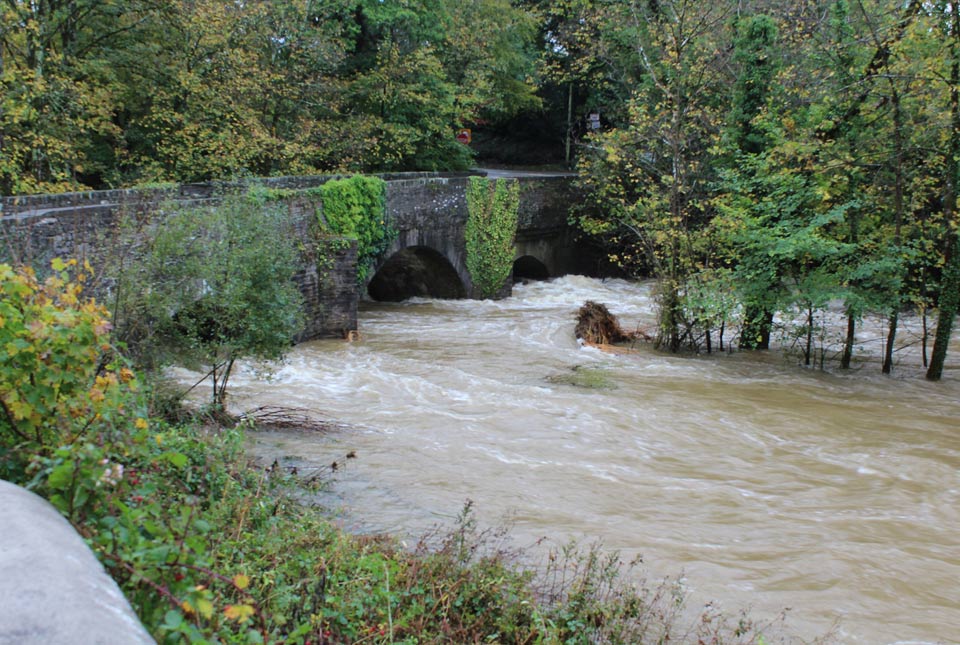
River scour is the removal of sediment or engineered materials from a river environment. It’s a real threat to riverine structures such as bridges and associated infrastructure. In Britain, there have been at least 50 known instances where river scour has caused railway bridge failures (van Leeuwen and Lamb, 2014, Lamb et al., 2019).
With projected climate scenarios telling us not only of an expected increase in rainfall in some areas of the UK, but also of an increase in the intensity of that rainfall, we are expecting river scour to become an increasing issue. With fuller and faster flowing rivers, proximal assets including roads and buildings could also become at increased risk if river scour removes sediments laterally and at a faster pace. We need to be able to identify locations at risk and adapt to the changing conditions to increase our resilience.
The existing BGS GeoScour data product provides information for users on the natural characteristics and properties of catchment and riverine environments for the assessment of river scour across Great Britain. Whilst this product provides information on baseline geological conditions and other associated characteristics, it does not convey potential for change through time. Take a look at this video we released on our original GeoScour product for some more information.


BGS GeoScour provides information for users on the natural characteristics and properties of catchment and riverine environments for the assessment of river scour in Great Britain.
To bring in this temporal component, with a focus on changing patterns of precipitation based on UKCP18 projections, we are now trialling a new GeoScour-Climate dataset. To date with this beta product, we have considered how climate change could modify potential effects related to flood accommodation space (locations with limited space to hold flood waters will potentially be at higher risk of scour events) and worst-case scenario erosion cases as identified in the current GeoScour product. This provides time-specific potential for change under the extreme scenario RCP 8.5 (read more about RCPs, or representative concentration pathways, on the Met Office website).
By integrating climate scenario information, we can move from providing baseline conditions to incorporating environmental process interactions over time. This will enable our data product users to establish a better understanding of how river scour might evolve through time. Incorporating this additional information into planning and risk assessment development can then help ensure climate resilience and the sustainability of both existing and future infrastructure and developments.
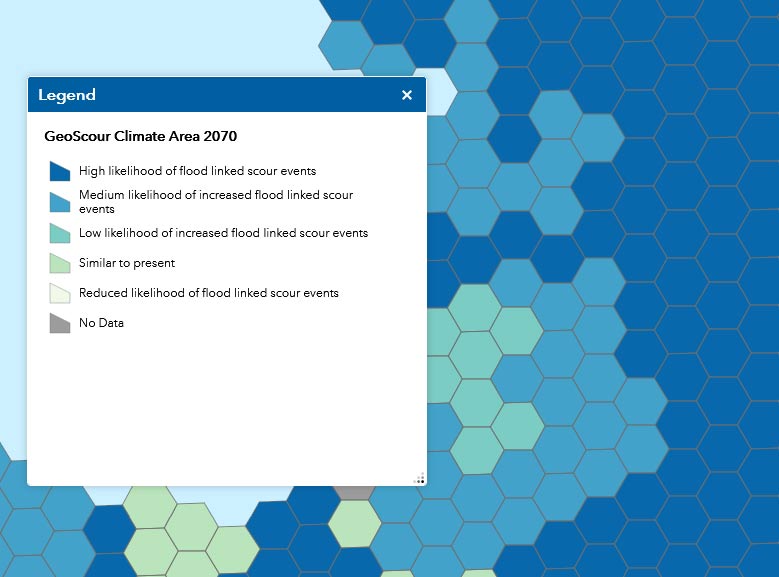
Snapshot of the GeoScour-Climate beta-product for 2070, resampled to 10 km hex grids. BGS © UKRI.
To ensure that our future products meet your requirements, consideration of your needs throughout the development process is essential. If you would like to learn more about our GeoScour-Climate developments or would like to discuss how this and similar climate related datasets might be useful for your applications or business, please get in touch with us at digitialdata@bgs.ac.uk. If you have five minutes, please also fill out our user engagement survey.
About the authors

Dr Christopher Williams
Head of BGS Digital Mapping

Kathryn Lee
Geologist and BGS Informatics product portfolio manager
Relative topics
Latest blogs
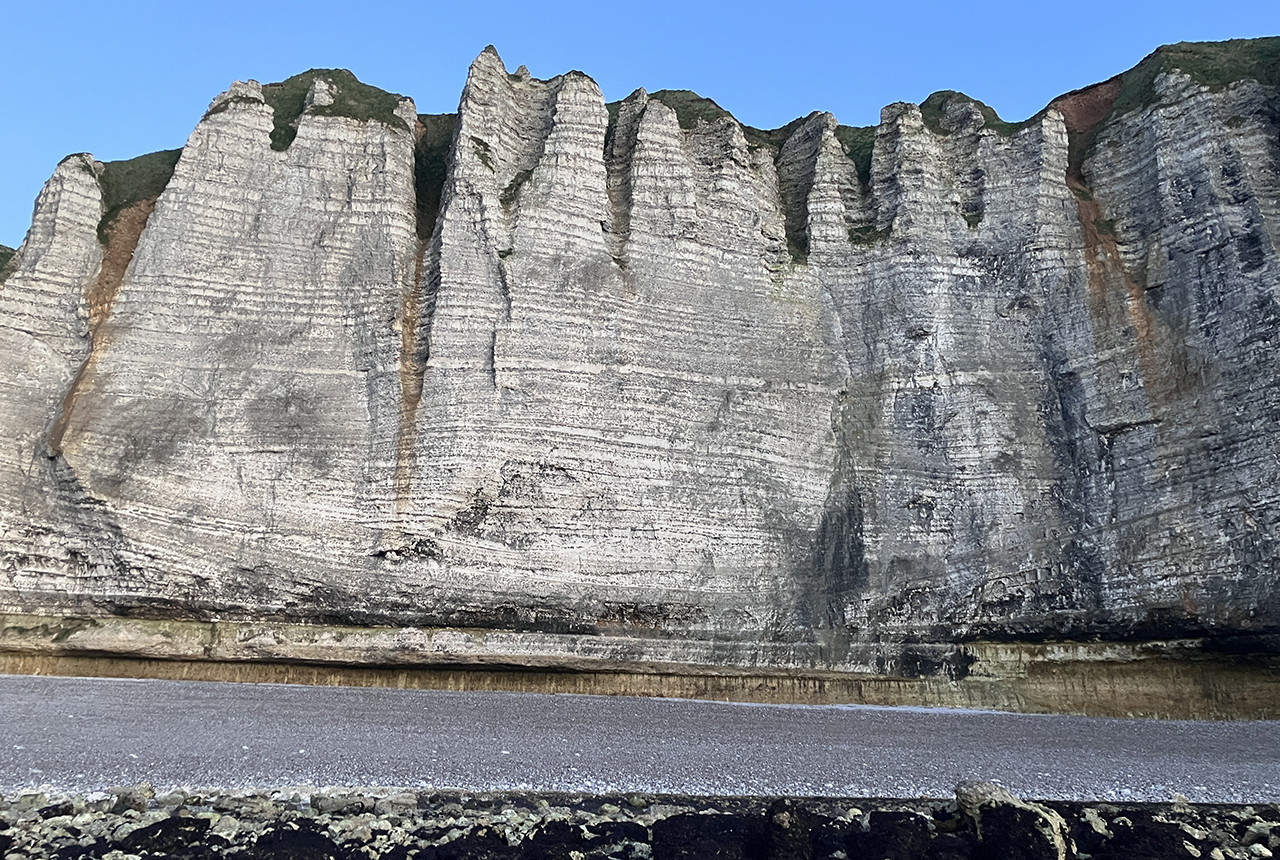
Geology sans frontières
24/04/2025
Geology doesn’t stop at international borders, so BGS is working with neighbouring geological surveys and research institutes to solve common problems with the geology they share.
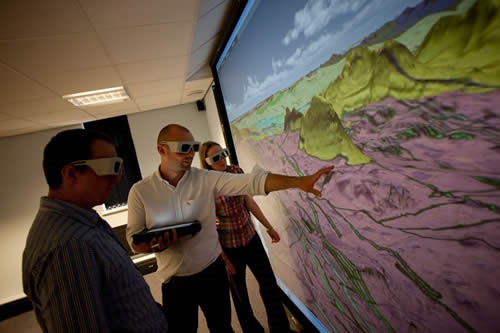
Celebrating 20 years of virtual reality innovation at BGS
08/04/2025
Twenty years after its installation, BGS Visualisation Systems lead Bruce Napier reflects on our cutting-edge virtual reality suite and looks forward to new possibilities.
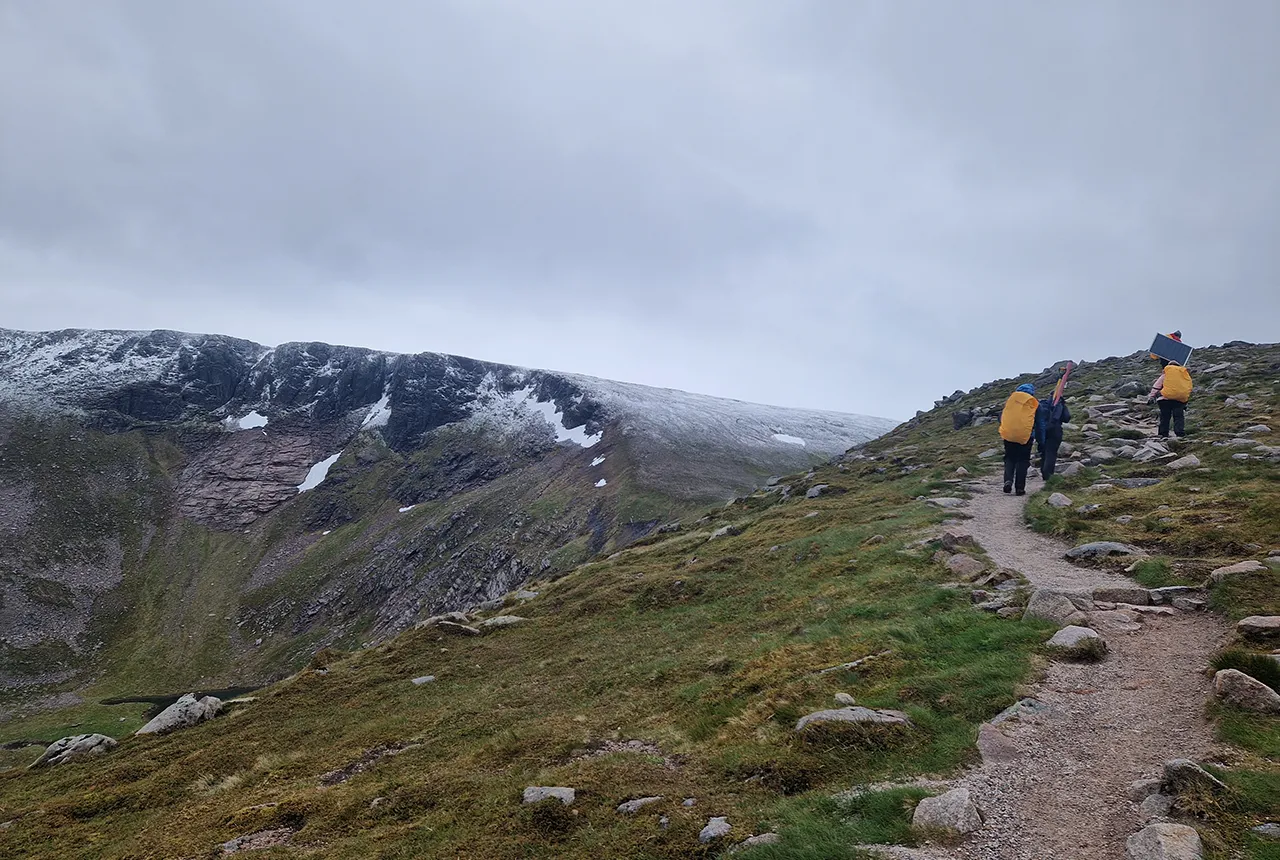
Exploring Scotland’s hidden energy potential with geology and geophysics: fieldwork in the Cairngorms
31/03/2025
BUFI student Innes Campbell discusses his research on Scotland’s radiothermal granites and how a fieldtrip with BGS helped further explore the subject.
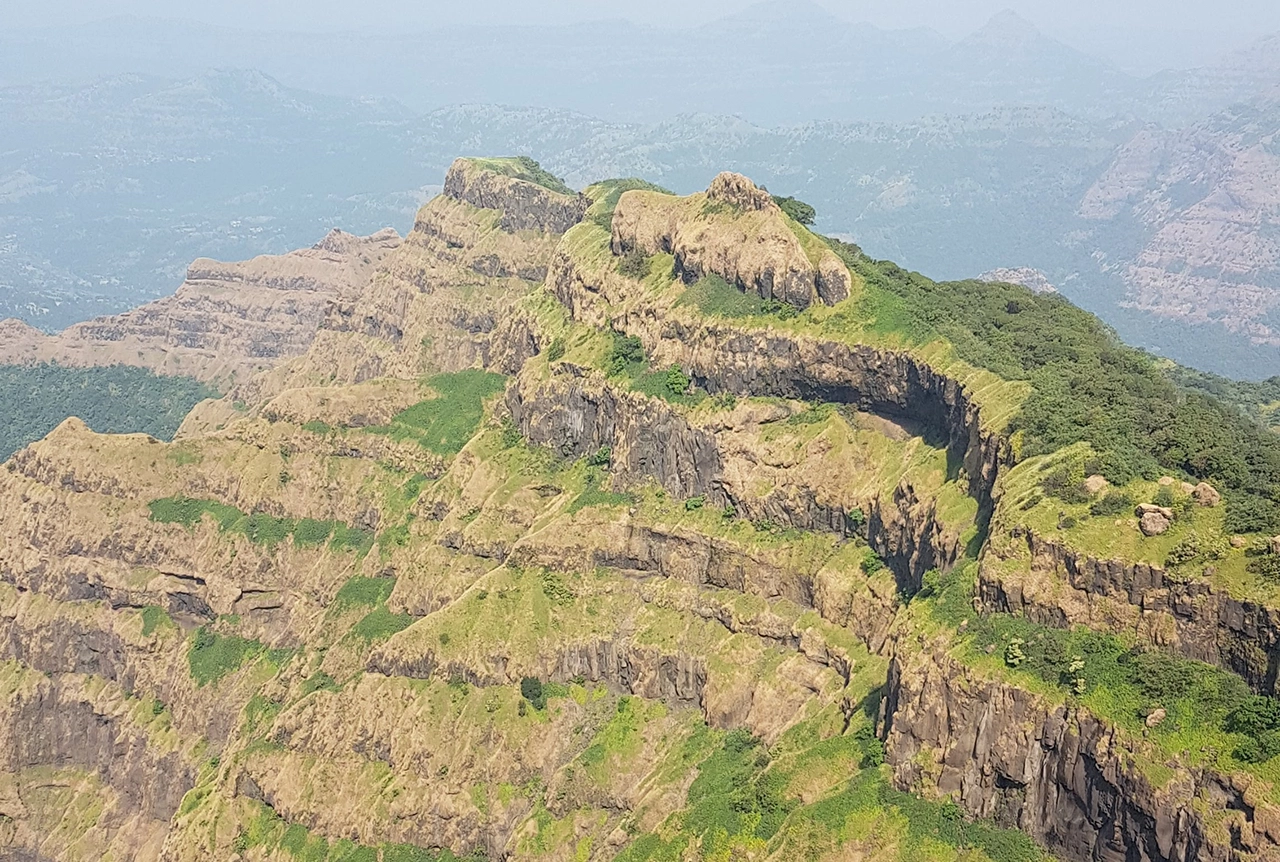
Could underground disposal of carbon dioxide help to reduce India’s emissions?
28/01/2025
BGS geologists have partnered with research institutes in India to explore the potential for carbon capture and storage, with an emphasis on storage.

Carbon and oxygen isotope analysis of carbonates and the development of new reference materials
18/12/2024
Dr Charlotte Hipkiss and Kotryna Savickaite explore the importance of standard analysis when testing carbon and oxygen samples.
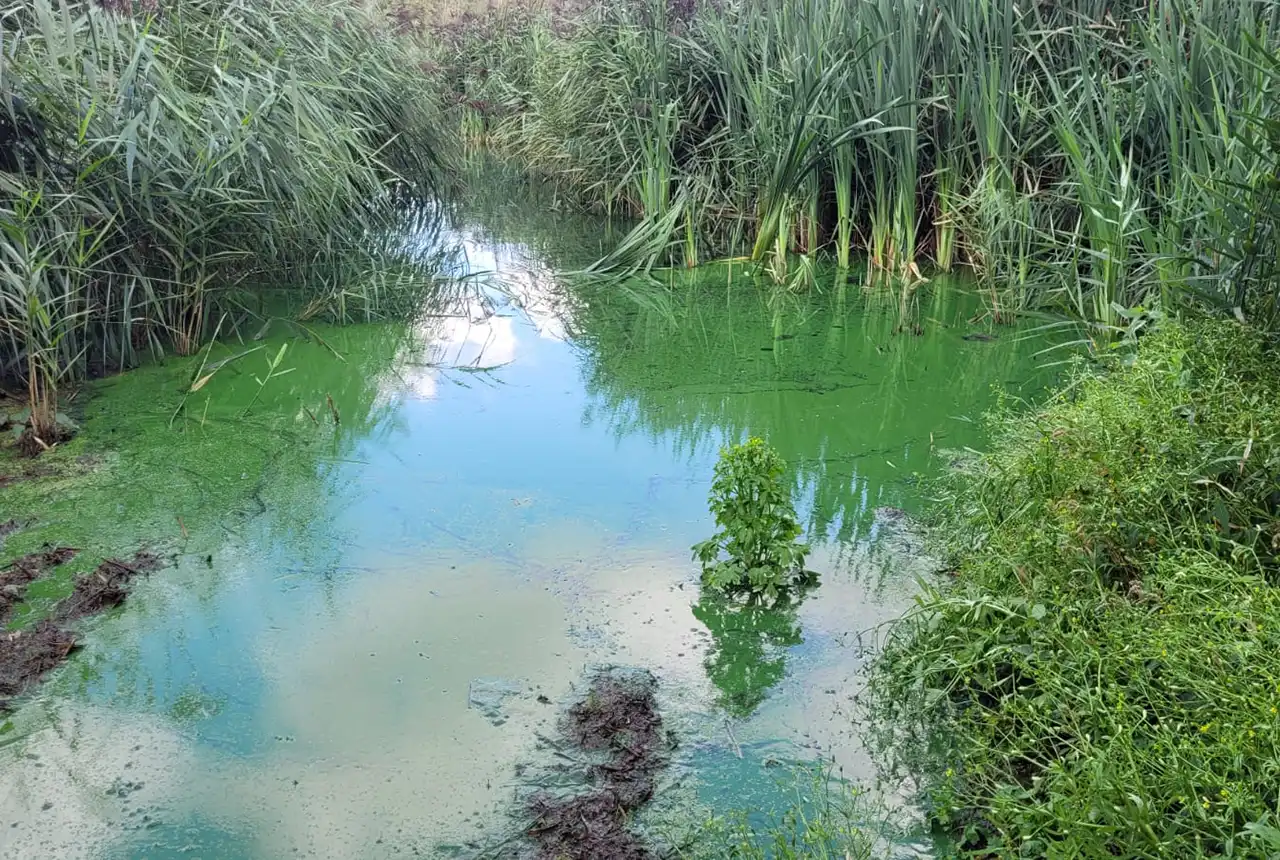
Studying oxygen isotopes in sediments from Rutland Water Nature Reserve
20/11/2024
Chris Bengt visited Rutland Water as part of a project to determine human impact and environmental change in lake sediments.
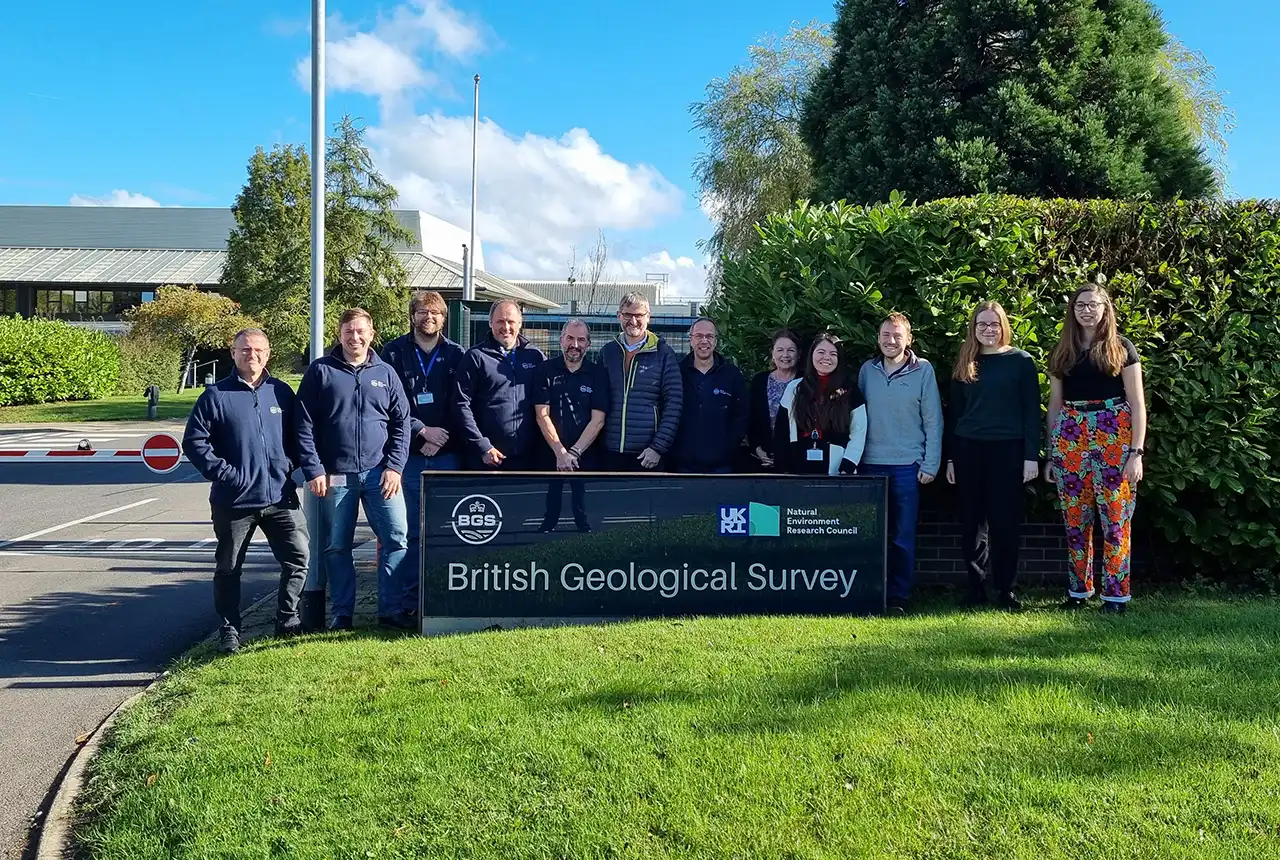
Celebrating 25 years of technical excellence at the BGS Inorganic Geochemistry Facility
08/11/2024
The ISO/IEC 17025 accreditation is evidence of technical excellence and reliability, and a mark of quality assurance.

Electromagnetic geophysics in Japan: a conference experience
23/10/2024
Juliane Huebert took in the fascinating sights of Beppu, Japan, while at a geophysics conference that uses electromagnetic fields to look deep into the Earth and beyond.

Exploring the role of stable isotope geochemistry in nuclear forensics
09/10/2024
Paulina Baranowska introduces her PhD research investigating the use of oxygen isotopes as a nuclear forensic signature.
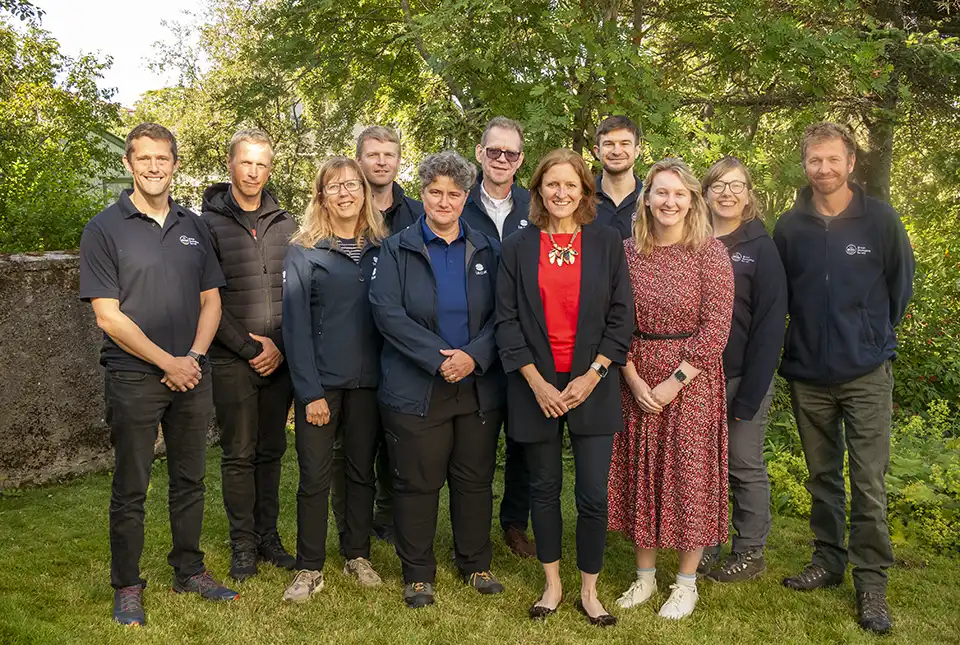
BGS collaborates with Icelandic colleagues to assess windfarm suitability
03/10/2024
Iceland’s offshore geology, geomorphology and climate present all the elements required for renewable energy resources.

Mining sand sustainably in The Gambia
17/09/2024
BGS geologists Tom Bide and Clive Mitchell travelled to The Gambia as part of our ongoing work aiming to reduce the impact of sand mining.

Visit by Indonesian Embassy representatives to BGS
27/08/2024
Strengthening BGS/Indonesia scientific research partnerships to address the complex challenges Indonesia faces from natural hazards and maximising opportunities from mineral resources and geothermal energy.



